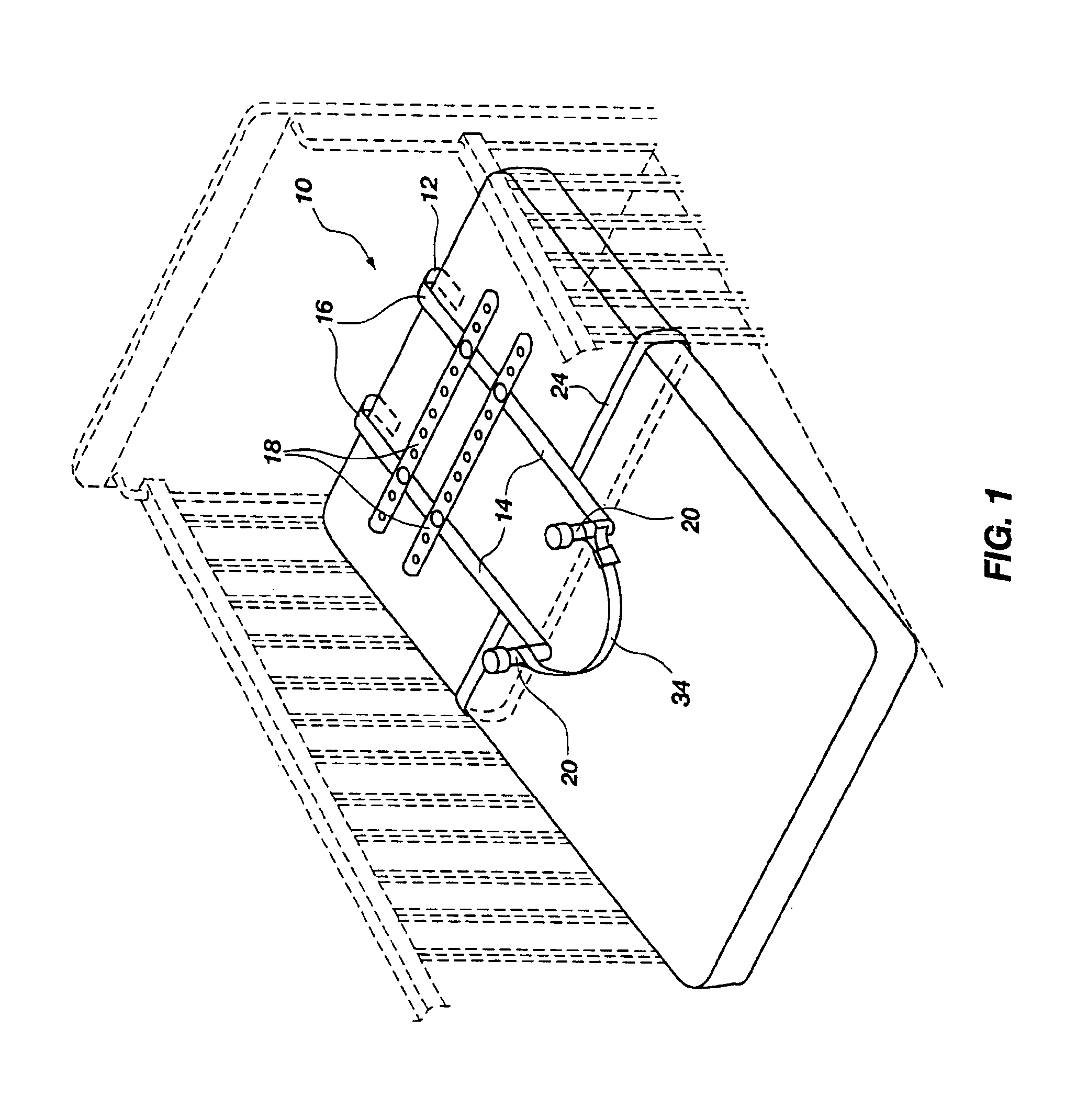Infant reflux mattress suspense system and bed
a mattress and suspense technology, applied in the field of infant beds and suspension systems, can solve the problems of difficulty in changing infants, ropes posing a significant risk of strangulation, cutting off the blood supply to limbs hands fingers, etc., and achieve the effect of not risking strap entanglement or blood circulation loss
- Summary
- Abstract
- Description
- Claims
- Application Information
AI Technical Summary
Benefits of technology
Problems solved by technology
Method used
Image
Examples
Embodiment Construction
[0059]As shown in FIG. 1, in its simplest embodiment, the infant reflux mattress suspense system 10 comprises mattress securing structure means 12 affixed to an elevated end of an infant mattress. The infant mattress is inclined at a desired angle 30 degrees or less, depending on the infant's condition. Usually this is done via supports placed under the end of the mattress.
[0060]The mattress securing structure means 12 extends along each side of a reclining infant placed on an inclined mattress. One preferred embodiment of the mattress securing structure means 12 is the H shaped harness shown in FIG. 1. It has variable width side bars 14 extending from the top of the elevated mattress to the torso of the infant. These side bars 14 have hooked ends 16 structured to pass over the elevated end of the mattress to secure the H shaped harness to the elevated mattress.
[0061]A pair of interconnecting notched parallel lateral supports 18 is adjustably attached to the side bars 14 via screws ...
PUM
 Login to View More
Login to View More Abstract
Description
Claims
Application Information
 Login to View More
Login to View More - R&D
- Intellectual Property
- Life Sciences
- Materials
- Tech Scout
- Unparalleled Data Quality
- Higher Quality Content
- 60% Fewer Hallucinations
Browse by: Latest US Patents, China's latest patents, Technical Efficacy Thesaurus, Application Domain, Technology Topic, Popular Technical Reports.
© 2025 PatSnap. All rights reserved.Legal|Privacy policy|Modern Slavery Act Transparency Statement|Sitemap|About US| Contact US: help@patsnap.com



